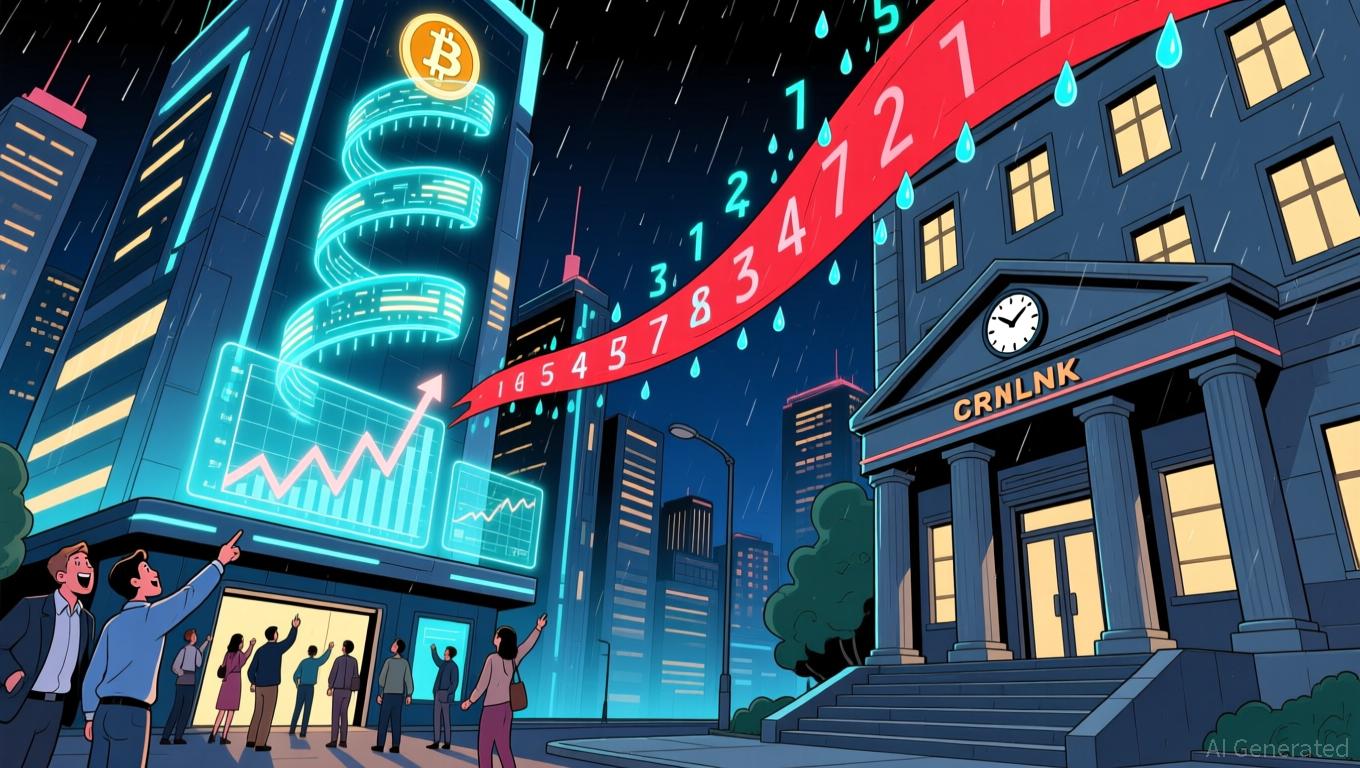ZEC drops 11.51% over 24 hours, Large Holder Movements and Accumulation Patterns Indicate Market Fluctuations
- ZEC fell 11.51% in 24 hours as a major whale liquidated 30,000 ZEC ($960K), facing 46% unrealized losses and a $420 liquidation price. - Binance saw $30M ZEC accumulation via coordinated whale buys, while the largest short position (0xd47) reduced losses to $10.87M amid ongoing bearish bets. - Zcash’s November 2025 halving will cut block rewards by 50%, boosting scarcity, while Grayscale’s $137M Zcash Trust highlights growing institutional interest. - Privacy-focused Zcash gains regulatory clarity under
As of November 11, 2025,
A prominent whale has been offloading its ZEC holdings in reaction to the recent price slump. Blockchain data shows that the whale wallet linked to the "Accurate ZEC Strategy" (0x96e) sold more than 30,000 ZEC in the last nine hours, incurring a $960,000 loss. The position now faces an unrealized loss of $950,000, or 46%, with a liquidation threshold at $420. The value of the remaining holdings has dropped to $10.37 million, down sharply from $37.01 million the day before.
Since November 3, this whale has been utilizing Hyperliquid to deposit funds and maintain a 5x leveraged long position on ZEC, rolling it over repeatedly. Before trimming its position, it was the largest ZEC bull on Hyperliquid. At the same time, the biggest ZEC short (0xd47) has been increasing its exposure to counteract ZEC’s price, reducing its unrealized loss from $20.19 million to $10.87 million, with an average entry price of $336.
Fresh accumulation signals have appeared on Binance, as ZEC whales have made spot purchases exceeding $30 million. On-chain analyst Ai Auntie reported that a whale accumulation pattern was identified, with sizable buy orders placed at 09:35 and 09:44 on November 11, each for about 2,200 ZEC (roughly $1.2 million). These transactions formed three clear clusters, suggesting coordinated whale buying activity.
Zcash is also approaching a halving event in November 2025, which will cut block rewards in half. This change will make
Zcash’s distinctive privacy features and optional transparency are helping it stand out amid regulatory scrutiny, despite ongoing challenges faced by privacy coins. The U.S. Clarity Act and Genius Act have established a legal structure for privacy-oriented projects to operate within compliance boundaries, further enhancing Zcash’s position as a privacy-centric alternative to Bitcoin.
Disclaimer: The content of this article solely reflects the author's opinion and does not represent the platform in any capacity. This article is not intended to serve as a reference for making investment decisions.
You may also like
Visa Launches Program to Speed Cross-Border Payments via Stablecoins

Solana News Update: Clearer Regulations Help Crypto Yields Close the Gap with Traditional Finance
- Crypto's yield gap with TradFi narrows as LSTs and RWAs drive innovation, with stablecoins and tokenized assets bridging the 8-11% vs. 55-65% disparity. - U.S. GENIUS Act boosted institutional trust in yield-bearing stablecoins by enforcing collateral rules and AML compliance, spurring 300% YoY market growth. - Circle's 4.15% reserve returns and $740M Q3 revenue highlight stablecoin profitability, while embedded solutions make adoption "invisible" in consumer apps. - DeFi crises like xUSD depegging cause

Bostic's Departure Under Political Scrutiny Challenges the Federal Reserve's Autonomy
- Atlanta Fed President Raphael Bostic announced his retirement in November 2025, stepping down in February 2026 after nearly nine years as the first Black and openly gay Fed regional bank leader. - His tenure emphasized economic equity post-2020 protests and cautious inflation management, supporting two 2025 rate cuts while urging restraint to return to the 2% inflation target. - Bostic's exit coincides with Trump administration pressure for lower rates and potential influence over regional banks , testin

ETC rises by 0.58% as technical indicators remain mixed, with recent backtesting pointing to a possible short-term mean reversion.
- ETC rose 0.58% in 24 hours to $15.68, despite 7-day and 1-year declines of 12.28% and 37.31%. - Technical indicators show mixed signals, with short-term stabilization contrasting persistent bearish momentum. - Backtesting reveals 24-hour rebounds after 10% drops often peak at +3% within 20 days but fade after 25 days. - Analysts caution the bounce likely reflects short-covering, not a sustained reversal, amid fragile market conditions. - Strategy suggests tactical 3-10 day mean-reversion trades with stri